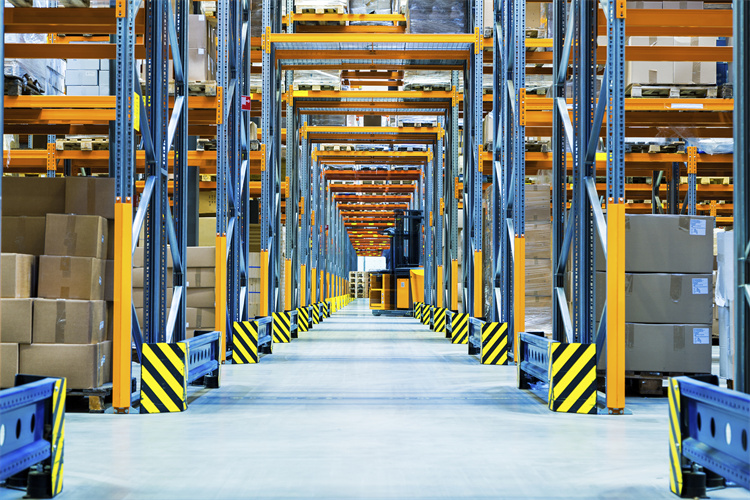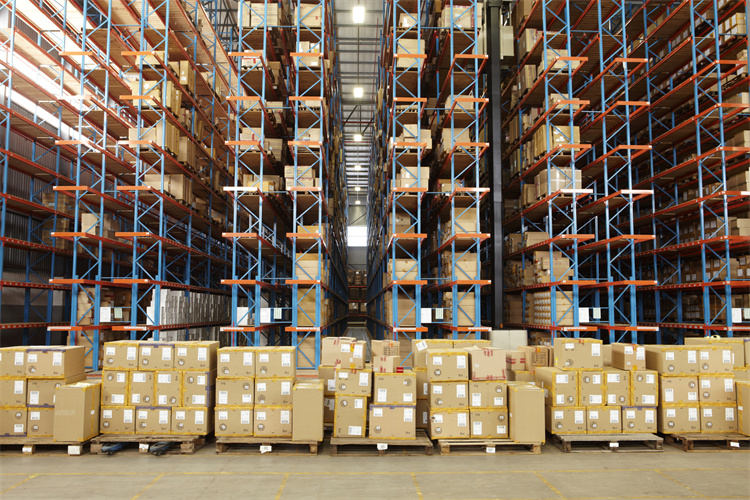Warehouse Robotics: Solutions to Common Automation Challenges

Warehouse Robotics revolutionizes the way warehouses operate. These robots work tirelessly, enhancing efficiency by performing repetitive tasks without fatigue. The integration of robotics in warehouses has surged, reaching a staggering $6.1 billion worldwide in 2022. This shift addresses labor shortages and optimizes operations. Robots not only reduce error rates but also accelerate order fulfillment, leading to significant cost savings. As a result, automation becomes crucial in modern warehouses, ensuring consistent and efficient performance while meeting the growing demands of e-commerce.
Understanding Warehouse Robotics
What is Warehouse Automation?
Definition and key concepts
Warehouse automation refers to the use of technology to streamline and enhance warehouse operations. It involves deploying machines and systems to perform tasks traditionally handled by humans. These tasks include inventory management, order picking, and transportation within the warehouse. Automation aims to increase efficiency, reduce errors, and lower operational costs. By minimizing manual labor, warehouses can achieve higher productivity and accuracy.
Historical context and evolution
The journey of warehouse automation began in the 1980s with the introduction of computers and basic robotics. During this period, robots started performing simple tasks like palletizing and moving inventory over short distances. This marked the beginning of a technological revolution in warehousing. Fast forward to 2022, the integration of robotics in warehouses surged to $6.1 billion globally. This growth was driven by labor shortages and the need for more efficient operations. As technology advanced, warehouses adopted more sophisticated robotic systems, transforming how they function.
Types of Warehouse Robotics
Automated Guided Vehicles (AGVs)
Automated Guided Vehicles (AGVs) are a type of warehouse robotics that navigate through the warehouse using predefined paths. They transport goods from one location to another, reducing the need for manual handling. AGVs rely on sensors and guidance systems to move safely and efficiently. They are ideal for repetitive tasks and can operate continuously without fatigue.
Autonomous Mobile Robots (AMRs)
Unlike AGVs, Autonomous Mobile Robots (AMRs) do not require fixed paths. They use advanced sensors and artificial intelligence to navigate dynamically within the warehouse. AMRs can adapt to changes in the environment, making them more flexible and versatile. They assist in tasks such as picking, sorting, and transporting goods, enhancing overall warehouse efficiency.
Robotic Arms and Pickers
Robotic arms and pickers are specialized robots designed for handling and manipulating items. They excel in tasks that require precision, such as picking and packing products. These robots can work alongside human workers, increasing productivity and reducing the risk of errors. By automating repetitive tasks, robotic arms and pickers contribute significantly to the efficiency of warehouse operations.
Implementation Strategies
Planning and Assessment
Identifying needs and goals
Warehouse Robotics requires a clear understanding of the specific needs and goals of the warehouse. Companies must first identify the areas where automation can bring the most significant benefits. This involves analyzing current processes to pinpoint inefficiencies or bottlenecks. For instance, if order fulfillment takes too long, robotics can streamline this process. By setting clear objectives, such as reducing error rates or increasing throughput, businesses can tailor their robotic solutions to meet these targets effectively.
Evaluating current systems
Before implementing Warehouse Robotics, evaluating existing systems is crucial. This step ensures that the new technology integrates seamlessly with current operations. Companies should assess their current infrastructure, including software and hardware capabilities. This evaluation helps determine whether upgrades or modifications are necessary. Additionally, understanding the limitations of current systems allows businesses to choose the most suitable robotic solutions. By doing so, they can avoid potential integration issues and ensure a smooth transition to automated processes.
Integration and Deployment
Choosing the right technology
Selecting the appropriate technology is vital for successful Warehouse Robotics implementation. Companies must consider factors such as the type of tasks the robots will perform and the warehouse environment. For example, Automated Guided Vehicles (AGVs) are ideal for transporting goods along fixed paths, while Autonomous Mobile Robots (AMRs) offer flexibility in dynamic environments. The choice of technology should align with the warehouse's specific needs and goals. By opting for the right robotic solutions, businesses can enhance efficiency and productivity.
Training and workforce adaptation
Introducing Warehouse Robotics necessitates training and workforce adaptation. Employees must learn to work alongside robots, understanding their roles in the new automated environment. Training programs should focus on operating and maintaining the robotic systems. Additionally, workers need to adapt to changes in their job responsibilities. By fostering a collaborative environment, companies can ensure that both humans and robots contribute to improved warehouse operations. This adaptation not only enhances productivity but also minimizes resistance to change.
"Robotics in warehousing streamlines the entire workflow of the warehouse and minimizes chances of error." This quote highlights the transformative impact of Warehouse Robotics on efficiency and accuracy.
Warehouse Robotics revolutionizes supply chain management by generating real-time data and analytics. These insights provide valuable information about warehouse performance, enabling companies to optimize their operations further. By embracing robotics, businesses can achieve greater efficiency and productivity across various applications, from transportation to order fulfillment.
Technologies in Warehouse Robotics

Sensors and IoT
Role of sensors in automation
Sensors play a crucial role in Warehouse Robotics by providing the necessary data for automation. Sensors play a crucial role by detecting and measuring various parameters such as temperature, humidity, and movement within the warehouse. This information helps robots perform tasks with precision and efficiency. For example, sensors guide Automated Guided Vehicles (AGVs) along predefined paths, ensuring safe and accurate transportation of goods. By continuously monitoring the environment, sensors enable robots to adapt to changes and maintain optimal performance.
Internet of Things (IoT) applications
The Internet of Things (IoT) revolutionizes Warehouse Robotics by connecting devices and systems for seamless communication. IoT-enabled automation relies on interconnected sensors and software to perform routine tasks efficiently. These applications include real-time inventory tracking, asset management, and workflow optimization. IoT devices provide valuable insights into warehouse operations, allowing companies to enhance productivity and reduce errors. As IoT technology advances, warehouses will increasingly adopt smart energy management devices and automation tools to streamline processes.
Artificial Intelligence and Machine Learning
Enhancing decision-making processes
Artificial Intelligence (AI) and Machine Learning (ML) significantly enhance decision-making processes in Warehouse Robotics. These technologies analyze vast amounts of data to identify patterns and trends, enabling robots to make informed decisions. AI-powered systems optimize inventory management by predicting demand and adjusting stock levels accordingly. Machine Learning algorithms improve order fulfillment by determining the most efficient picking routes. By leveraging AI and ML, warehouses can achieve greater accuracy and efficiency in their operations.
Predictive maintenance and analytics
Predictive maintenance and analytics transform Warehouse Robotics by minimizing downtime and maximizing productivity. AI and ML algorithms analyze data from sensors to predict when equipment requires maintenance. This proactive approach prevents unexpected breakdowns and extends the lifespan of robotic systems. Additionally, real-time analytics provide insights into warehouse performance, helping companies identify areas for improvement. By embracing predictive maintenance and analytics, warehouses can ensure the reliability and efficiency of their robotic solutions.
Warehouse Robotics continues to evolve with advancements in technology. Sensors, IoT, AI, and Machine Learning drive innovation, enabling warehouses to overcome challenges and enhance operations. As these technologies develop, warehouses will become more efficient, accurate, and sustainable, meeting the demands of modern logistics and supply chain management.
Challenges in Warehouse Automation
Warehouse Robotics has transformed the logistics industry, yet it presents several challenges that businesses must address to maximize its benefits. These challenges fall into two main categories: technical and operational.
Technical Challenges
System Integration Issues
Integrating Warehouse Robotics into existing systems often poses significant challenges. Many warehouses rely on legacy systems that may not easily accommodate new robotic technologies. This incompatibility can lead to disruptions in workflow and inefficiencies. Companies must ensure that their current infrastructure can support the seamless operation of robotics. They should evaluate their software and hardware capabilities to identify necessary upgrades. Successful integration requires careful planning and collaboration between IT and operations teams.
Maintenance and Reliability Concerns
Maintaining Warehouse Robotics systems is crucial for ensuring their reliability and longevity. Robots require regular maintenance to function optimally. Without proper upkeep, they may experience breakdowns, leading to costly downtime. Companies must establish a comprehensive maintenance schedule that includes routine inspections and repairs. Predictive maintenance, powered by AI and IoT, can help anticipate potential issues before they occur. By investing in maintenance, businesses can enhance the reliability of their robotic systems and minimize disruptions.
Operational Challenges
Workforce Adaptation and Training
The introduction of Warehouse Robotics necessitates significant changes in workforce dynamics. Employees must adapt to working alongside robots, which requires new skills and training. Companies should implement training programs that focus on operating and maintaining robotic systems. These programs should also address changes in job responsibilities, helping workers transition smoothly into their new roles. By fostering a collaborative environment, businesses can ensure that both humans and robots contribute to improved warehouse operations.
Cost and Budget Constraints
Implementing Warehouse Robotics involves substantial financial investment. The cost of purchasing and integrating robotic systems can strain budgets, especially for small and medium-sized enterprises. Companies must carefully assess their financial capabilities and prioritize investments that offer the most significant returns. They should consider factors such as the potential for increased efficiency and reduced labor costs. By strategically allocating resources, businesses can overcome budget constraints and achieve long-term benefits from automation.
Warehouse Robotics offers immense potential for enhancing efficiency and accuracy in logistics operations. However, businesses must address the technical and operational challenges associated with its implementation. By focusing on system integration, maintenance, workforce adaptation, and cost management, companies can successfully navigate these challenges and unlock the full potential of Warehouse Robotics.
Benefits of Warehouse Robotics

Warehouse Robotics offers numerous advantages that significantly enhance the efficiency and safety of warehouse operations. By integrating advanced technologies, businesses can achieve remarkable improvements in productivity and risk management.
Efficiency and Productivity
Reducing operational costs
Warehouse Robotics plays a pivotal role in reducing operational costs. Robots perform repetitive tasks with precision, eliminating the need for extensive manual labor. This reduction in human involvement leads to lower labor costs and minimizes errors that can result in costly mistakes. Additionally, robots operate continuously without breaks, maximizing productivity and ensuring consistent performance. As a result, companies experience substantial cost savings, which contribute to their overall profitability.
Increasing throughput and accuracy
The implementation of Warehouse Robotics significantly increases throughput and accuracy. Robots streamline processes such as order picking and inventory management, allowing warehouses to handle larger volumes of goods efficiently. With their ability to work tirelessly, robots accelerate order fulfillment, meeting the growing demands of e-commerce. Moreover, the precision of robotic systems reduces error rates, ensuring that orders are accurate and delivered on time. This enhanced efficiency not only boosts customer satisfaction but also strengthens the competitive edge of businesses.
Safety and Risk Management
Minimizing human error
Warehouse Robotics minimizes human error by automating complex and repetitive tasks. Robots execute tasks with high precision, reducing the likelihood of mistakes that can occur with manual handling. This automation ensures that processes are consistent and reliable, enhancing the overall quality of operations. By minimizing human error, businesses can maintain high standards of service and avoid costly disruptions.
Enhancing workplace safety
The integration of Warehouse Robotics enhances workplace safety by reducing the risk of accidents and injuries. Robots handle tasks that may pose physical risks to human workers, such as lifting heavy loads or operating in hazardous environments. This shift allows employees to focus on tasks that require critical thinking and decision-making, promoting a safer work environment. As a result, companies can reduce workplace injuries and associated costs, fostering a culture of safety and well-being.
"The global market for Warehouse Robotics reached $6.1 billion in 2022 and is expected to grow to $16 billion by 2030." This growth underscores the increasing reliance on robotics to drive efficiency and safety in warehouses.
Warehouse Robotics continues to transform the logistics industry by offering solutions that enhance efficiency, accuracy, and safety. As technology advances, the benefits of robotics will become even more pronounced, enabling warehouses to meet the evolving demands of modern supply chain management.
JUSDA's Role in Warehouse Robotics
JUSDA's Innovative Solutions
JUSDA stands at the forefront of Warehouse Robotics, offering cutting-edge solutions that transform supply chain operations. Their commitment to innovation and efficiency drives the development of technologies that enhance warehouse automation.
JusLink Intelligent Supply Chain
The JusLink Intelligent Supply Chain represents a significant advancement in Warehouse Robotics. This platform integrates IoT, cloud computing, and big data to create a seamless and efficient supply chain. By leveraging these technologies, JusLink enables real-time collaboration and information sharing across the supply chain. This integration optimizes operations, reduces errors, and enhances decision-making processes. Companies benefit from improved visibility and control over their logistics, leading to increased efficiency and productivity.
Industry-specific solutions
By understanding the distinct challenges and requirements of each industry, JUSDA provides customized robotic systems that enhance efficiency and accuracy. These solutions streamline operations, reduce costs, and improve overall performance.
JUSDA's impact on Warehouse Robotics is evident through numerous case studies and success stories. These examples highlight the transformative power of their solutions in real-world applications.
JUSDA's impact on Warehouse Robotics is evident through numerous case studies and success stories. These examples highlight the transformative power of their solutions in real-world applications.
Electronic manufacturing sector
In the electronic manufacturing sector, JUSDA's Warehouse Robotics solutions have revolutionized operations. By implementing advanced robotic systems, companies have achieved remarkable improvements in efficiency and accuracy. Robots handle tasks such as inventory management and order fulfillment with precision, reducing errors and increasing throughput. This automation allows manufacturers to meet the growing demands of the market while maintaining high standards of quality. The success of JUSDA's solutions in this sector underscores their ability to drive innovation and enhance productivity.
Automotive and FMCG industries
JUSDA's Warehouse Robotics solutions have also made a significant impact in the automotive and FMCG industries. In the automotive sector, robots streamline processes such as parts assembly and logistics, ensuring timely delivery and reducing production costs. Similarly, in the FMCG industry, robotic systems optimize inventory management and order processing, enabling companies to meet the fast-paced demands of consumers. These success stories demonstrate the versatility and effectiveness of JUSDA's solutions across different industries. By embracing Warehouse Robotics, businesses in these sectors achieve greater efficiency, accuracy, and competitiveness.
JUSDA continues to lead the way in Warehouse Robotics, providing innovative solutions that transform supply chain operations. Their commitment to industry-specific solutions and real-world success stories highlights their expertise and dedication to enhancing efficiency and productivity. As the demand for automation grows, JUSDA remains a key player in shaping the future of warehouse operations.

JUSDA Solutions
To provide you with professional solutions and quotations.
Warehouse Robotics has emerged as a transformative force in modern logistics, addressing challenges and enhancing efficiency. Key points discussed include the types of robotics, implementation strategies, and the benefits they bring to warehouse operations. Looking ahead, future trends in warehouse robotics will likely focus on integrating Artificial Intelligence and Machine Learning for smarter decision-making and predictive maintenance. As technology evolves, businesses should embrace automation solutions to stay competitive. By adopting these innovations, companies can optimize operations, reduce costs, and improve safety, ensuring they meet the demands of a rapidly changing market.
See Also
Enhancing Efficiency: Warehouse Automation with Robotics Unveiled
Logistics Robotics Dominance: Boosting Warehouse Efficiency
Automated Tomorrow: Benefits of High-Tech Manufacturing Warehouses
Unveiling Sustainability: Trends in Robotics for Supply Chain Management
